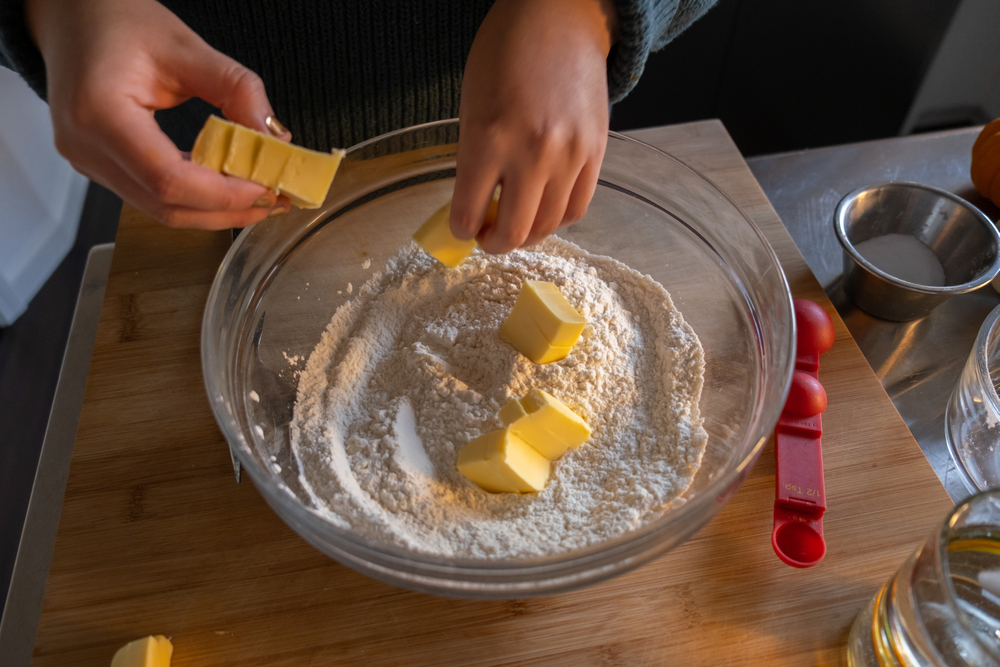Here’s a cheat sheet butter chart to keep handy in the kitchen:
- 1⁄4 cup = 1⁄2 stick = 4 tablespoons = 2 oz. = 57g
- 1⁄2 cup = 1 stick = 8 tablespoons = 4 oz. (1⁄4 pound) = 113g
- 3⁄4 cup = 1 1⁄2 sticks = 12 tablespoons = 6 oz. = 170g
- 1 cup = 2 sticks = 16 tablespoons = 8 oz. (1/2 pound) = 227g
- 1 1/4 cups = 2 1/2 sticks = 20 tablespoons = 10 oz. = 283g
- 1 1/2 cups = 3 sticks = 24 tablespoons = 12 oz. (3/4 pound) = 340g
These measurements should help you accurately measure butter for your recipes. Remember to adjust the measurements based on your specific needs. Whether you prefer using cups, sticks, tablespoons, or weight measurements (in ounces or grams), this chart has you covered.
Measuring Butter with the Water Displacement Method
If you’ve got odds and ends of butter in your refrigerator; don’t have a digital scale; and don’t want the hassle of measuring tablespoon by greasy tablespoon of butter, you can use the water displacement method to measure the desired amount for your baking needs.
To measure butter with the water displacement method:
- Fill a 2-cup (500 ml) liquid measuring cup with 1 cup of water (250 ml).
- Add the butter to the cup, and push it down to make sure it is fully submerged in the water. The increase in the water level represents the volume of the butter.
- Write down the number on your measuring cup corresponding to the new level of water. Subtract 1 cup (250 ml) to get the volume of the butter in cups or milliliters. (For example, for 250 grams of butter (one measuring cup) the water level needs to reach 500 ml)
More Butter Measuring Tips and Precautions
Remember to fully submerge the butter so it displaces the correct amount of water and pat the butter dry before adding it to your recipe.
Note that melted butter cannot be measured by the water displacement method, and differs from solid butter in both weight and volume. Melted butter may weigh less than solid, and have reduced volume.
Remember: when you’re cooking, precise measurements don’t always matter to the final outcome. With baking it is a completely different story. Always be accurate when measuring butter for the best results in your cooking and baking.
